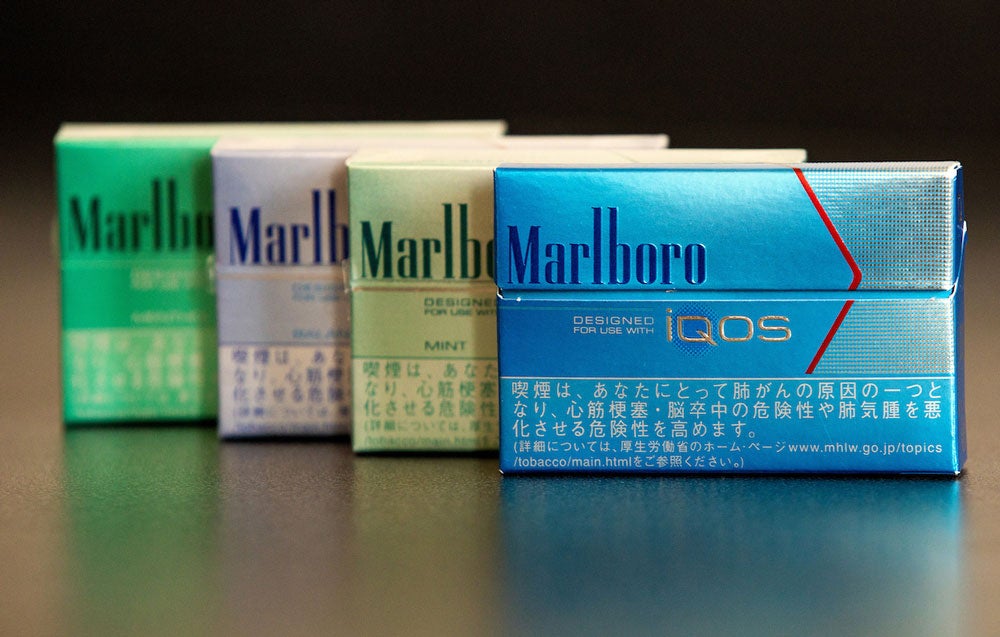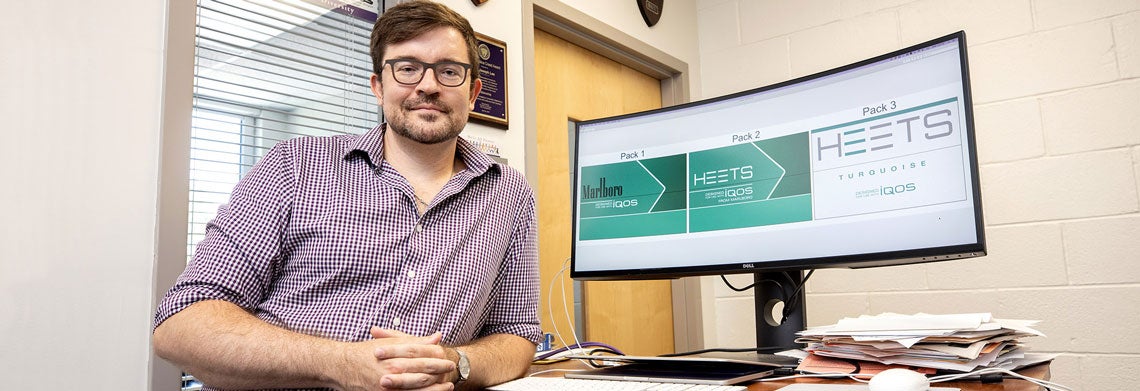DESIGN MATTERS
ECU study looks at new tobacco product packaging and consumer views
East Carolina University researchers hope their findings on consumers’ views of packaging design will impact the FDA’s review of a new heated tobacco product expected to be sold in the U.S. this year.
The product, IQOS, is about the length of a ballpoint pen and heats the tobacco – without burning – to release nicotine. This significantly reduces levels of harmful chemicals compared to cigarette smoke, according to manufacturer Phillip Morris. The FDA is evaluating the company’s request to market IQOS as a less harmful product than cigarettes.
While the product is already being sold in about 30 European and Asian countries as well as Canada, how IQOS will be marketed in the U.S. is still under review by the FDA, said principal investigator Dr. Joseph Lee, assistant professor of health education and promotion in the College of Health and Human Performance.

Marlboro IQOS heated tobacco products will soon be available in the U.S.
Researchers at ECU hope their study into the way people think about and make choices based on IQOS packaging designs will inform the FDA in its decision-making process.
Lee collaborated on the study, which was recently published in Tobacco Control, with Tiffany Blanchflower, teaching assistant professor of interior design and merchandising; Kevin O’Brien, professor of biostatistics; Paige Averett, professor of social work; and Leslie Cofie, assistant professor of health education and promotion.
“Hopefully this is useful to the FDA as they release the next set of decisions on IQOS,” Lee said. “We’ve been building the evidence that the visual design of tobacco products really matters in how consumers see them, and it’s important for the FDA to consider that.”
For ECU’s study, researchers worked with School of Art and Design alumnus Nunzio Landi to design three IQOS packages linked to the Marlboro brand in a style of packaging already used globally. Health warnings and product details were removed.
In September and October, 954 participants were randomly assigned to see one of the packages in an online survey. All participants were adults who smoked, and quota sampling was used to ensure diversity by race, ethnicity, gender, sexual orientation and educational levels.
Researchers concluded that linking or separating IQOS with a well-established cigarette brand changes how adult smokers perceive the product – even in the absence of wording declaring the product as less harmful.
“IQOS products are already viewed by consumers in Japan and Switzerland as ‘pure’ and ‘clean,’ which is likely an outcome of both the visual design of the product and marketing efforts,” according to the study brief.
Previous research has shown that the visual design of tobacco products influence consumers’ perceptions about quality and safety. For instance, certain colors of packages imply a product is lower risk or healthier – even if it’s not.
“FDA is required to consider scientific evidence when regulating tobacco products to protect the public’s health, and I’m really proud that our work at ECU is helping to provide that evidence,” Lee said.
The latest research at ECU adds to four papers already published in other public health journals on smokers’ perceptions of cigarette pack design, which was funded in 2016 by the National Cancer Institute and the FDA. The two-year, $221,250 grant for “Cigarette packaging: Design, Cognition and Consumer Choices” ended in August.

As part of the ECU study, researchers worked with alumnus Nunzio Landi to design three IQOS packages – shown here on Dr. Joseph Lee’s monitor – based on a style of packaging already used globally.
